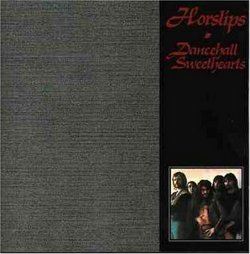Transition from prog-folk to folk-pop-rock
John L Murphy | Los Angeles | 07/22/2006
(3 out of 5 stars)
"(Note: Amazon has two entries but both I believe are for the remastered 2000s-era issue; see my note at the end of this review.) I had never heard this one on vinyl; I have all but a couple of their output on LP and some on CD now. I wondered how this fit in to their progression from folkier hard-rock on "Happy" and "Tain" albums that preceded it. I knew that it's followed by "Unfortunate Cup of Tea," which is considered much less of a success than their first three LPs.
Well, "Dancehall"'s a transitional album--3 1/2 stars more like but since it falls short of their best, I keep it at 3 for comparison--showing what would only become a more dominant influence around four years later for the band: Jim Lockhart's keyboards are favored over winds and pipes; Charles O'Connor's guitar takes the stage and not the traditional instruments that on the two previous albums had mixed into the semi-prog blend a more identifiably Celtic style.
I paraphrase the album's admission that "these songs have traditional guises concealed about their persons." You can find out more about such drapery on the Come Back Horslips site. Apparently this record's the remains of a concept album on Turlough O'Carolan, the celebrated blind harpist. This topical and tuneful semi-concealment appealingly opens the album, as Nighttown Boy and then The Blind, Stars, We Bring the Summer all merge a more pop ambience into a lighter sound that moves nimbly along. Sections do grow on you with repeated listenings, although the pace slows after the most trad workout here, King. The best other track is the mix of choir with song on The Blind--this cross-genre appeal was taken up in a more keyboard new-wave style a decade later by Pierce Turner.
Vocals are gentler, and the sprightly keyboards keep the first four tracks going, at the expense of the folk elements themselves but showing that Horslips manages to stay balanced, even if many fans prefer the albums that came before and a bit after this one. These tracks expand their sound akin to what Jethro Tull was doing around the same period, or even Steeleye Span--a harder metallic edge was entering to replace the earthier late 60s & earlier 70s attitudes of these influential British bands (both of which Horslips toured with).
Given the grandiosity of this period for almost any artist who plugged into an amp, at least Horslips seems aware of the advantages from a subtler delivery of light pop-folk-rock if on less traditionally-based instruments. All of these four tracks move along nicely and cheerfully. The most traditionally-sounding track for fans (if for Horslips this means combining high volume with trad!) is King of The Fairies, the most popular song from this LP judging from compilations.
What was Side 2, however, wears out its welcome. The songs do not at first sound that much different than the first four on Side 1. But the four on Side 2 seem to take forever. They get mired in arrangements that fail to propel them forward. The propulsion that floated tracks 1-4 is missing from tracks 5-9. These prove in retrospect too diffused for the band, at least in succeeding at blending a more hard-rock style of delivery while keeping it accessible and recognizably Irish-based.
This is 1975, granted, and thankfully the excess is not endless unlike the efforts of so many of their ambitious peers! The cover photo shows the band in appropriately glam-pomp attire! But, to be honest, tracks 6-9 fail to stick in the memory after they've been heard. The album's redeemed by a tender and simpler song that for this becomes all the more effective, The Best Years.
(P.S.: As with all of the band's albums elegantly and faithfully remastered on Edsel/Demon circa 2000, these far surpass the muffled tapes that were released without the band's control on Homespun/Outlet in the 80s/90s. Make sure that you buy the band-approved versions.)"

